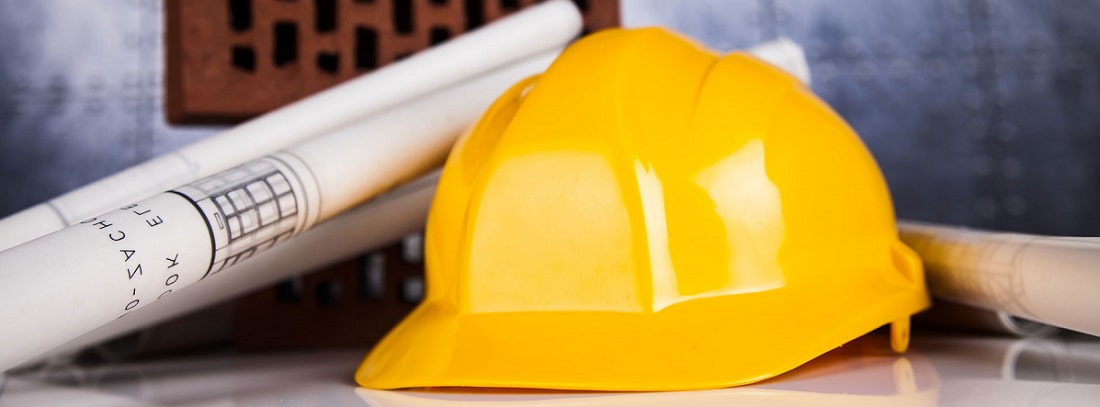Perfect Guide to Choose the Right Builder’s Risk Insurance

Building and construction projects are complex, with no lack of things that can go wrong. With everything that can occur during the construction process, it’s crucial to have the right insurance in place. Of all of the various insurance coverages to consider, builders risk insurance is one of the most important for companies in the construction industry.
What is Builders Risk Insurance?
It’s a unique type of property insurance that covers a building where the building or insured area is currently being constructed. This insurance can cover only the structure, or also the materials on-site waiting to be installed or transported to the job site. It’s a form of coverage that most owners will ask every contractor to carry.
Is It Mandatory?
The majority of the time, financing is included in a building project, and most financial lenders demand a builders’ risk policy to be in place before any work being performed. Still, there is the off chance that the project is fully funded by either the building owner or the builder, and no proof of builders’ risk insurance is needed. Making it as part of your practice is a smart decision and usually an inexpensive one at that.
What Does Builder’s Risk Insurance Cover?
It covers the costs of replacing building materials or repairing an unfinished structure when weather, fire, vandalism, or thieves hit a construction site.
- Structural damage from the weather – It covers the cost of damage caused by non-severe weather events, including wind, rain, and hail;
- Fire damage – A fire at a construction site could severely damage an unfinished structure or building materials. This insurance covers the cost of replacing or repairing items damaged by fire;
- Vandalism – A vandal can set a construction project back for months by spraying painting walls, destroying fixtures, and breaking windows. If the construction site is vandalized, this coverage can compensate you for the damage so you can continue working on the project.
- On-site theft – Since construction sites are often left unguarded, they’re a frequent target for thieves. Builder’s risk insurance can help reimburse you for stolen materials.

It Doesn’t Cover?
- Damage from natural disasters – Builder’s risk insurance doesn’t usually cover the damage caused by natural disasters such as earthquakes, tornadoes, or floods. To cover these kinds of events, add a severe weather endorsement to your policy;
- Damage to tools and equipment – Damage to tools and equipment is not covered by the builder’s risk insurance. Contractor’s tools equipment and tools insurance pays repair or replace lost, stolen, or damaged tools and equipment valued under $10,000;
- Damage due to faulty materials or design – It doesn’t cover damage to an unfinished structure that results from faulty construction, materials, or design. Professional liability insurance for contractors and construction workers protects your business from these liabilities;
- Employee injuries – This type of insurance doesn’t cover employees from illnesses or injures related to work on a construction site. Workers’ compensation insurance pays medical costs and partial lost wages resulting from work injuries and occupational diseases.
RELATED ARTICLES:
- Independent Contractor Insurance Revealed: Coverage and Requirements
- Practical Guide to Homeowners Policy
- Workers Compensation Insurance 101
- What is Landlord Insurance and Why You Need It?
- Key Facts About Renters Insurance Every Tenant Should Know
- What Does Condo Insurance Cover?
- Top 5 Small Business Insurance Policies You Should Use
- Everything You Must Know About Liability Insurance
- How Does Umbrella Insurance Really Work?
- Fire Insurance Coverage 101 – Definition, Policies, and Cost
What Do You Have to Know When Buying Builders Risk Policy?
These basic guidelines will help general contractors and owners understand their exposures and minimize their risks:
- Hire an experienced broker or agent – Since every construction project has unique risks, it’ vital to work closely with a broker or agent and insure to design the coverage that gives the exceptional protection your project requires. An agent can also help you choose the proper amount of coverage and provide quotes from several insurers;
- Consider all of your exposures – Do an inventory of all exposures for the project, like those at the construction site, or ones in temporary storage or in transit at various stages of the project. You may buy broad protection for the property of all types at all locations or may opt to narrow your coverage to particular property and risks. Whatever degree of coverage you choose, carefully review your policy provisions to make sure there are no unwanted surprises or gaps in the case of a loss;
- When coverage starts – This type of insurance takes effect as of the date when all contracts are signed, but policy provisions may limit when coverage starts for your project. Be sure you understand specifically what triggers the commencement of the coverage;
- When coverage ends – Builder’s risk is temporary insurance. Your policy will formulate the conditions upon which coverage will end. It can vary but typically happens when the policy expires or is canceled upon occupancy. Coverage ceases automatically, so it’s advisable to make arrangements for permanent property insurance in advance of the expiration date;
- Defective work issues – As a general rule, builders risk policies exclude the costs of correcting or repairing faulty work performed by subcontractors. Anyway, policies with an ensuing loss provision may cover, resulting in damage to other property that’s caused by the faulty workmanship. Exclusionary provisions can vary widely, still, if your policy includes such a provision, ensure you understand the extent of the coverage.
- Read the policy – Before signing your contract, go over all policy provisions. Check all coverages, conditions for coverage, and exclusions carefully. Be sure you understand what will and won’t be insured should a loss occurs.
Who Pays for Builders Risk Insurance?
Any company or person with a financial interest in the construction project must have a builder’s risk coverage. Stakeholders involve the property owner along with the general contractor and subcontractors who have an interest until the project is installed and they’re paid. If the project is financed, the lender may need coverage and will also be a named insured under the policy. Engineers and architects may also be named on the policy if they’re not otherwise covered.
A waiver of subrogation is a standard clause in builders’ risk policies. With this inclusion, each party of the contract agrees to waive their right of subrogation versus others on the job to the level that the policy covers the damage.
How Long Does It Last?
On average, a policy lasts three, six, or twelve months. It can usually be extended at least once if the building isn’t finished. Coverage can continue for up to three months after the completion or as far as ownership is transferred from the general contractor or the building is occupied.

How Much Does Builders Risk Insurance Cost?
Like all policies, this will depend on the level of the coverage that has been bought, and whether the policyholder has chosen high deductible options and/or endorsements. Policies are standardly in the range of 1 to 4% of the total construction costs. The construction budget is an excellent source for determining the correct coverage limit, which should precisely show the total completed value of the structure (excluding land value).
What is Builders’ Risk Insurance for Homeowners?
In case you’re building a new home or remodeling an old house, this insurance should be provided to have appropriate protection for all parties involved. Your lender will demand proof of builders’ risk insurance. If there isn’t a lender, then the homeowner should be requesting this of their builder.
Owning proper a builder’s risk policy for your house building project will make two things. First, it’ll ensure that none of the claims that could occur during a build-out will fall under your responsibility. Second, the policy will protect the builder from having to come out of the wallet to pay for any claims.
You can see that this’s a beneficial insurance policy for everyone. Contacting your independent insurance agent to double-check details of your builder’s risk project is the first thing to do.
How Builder’s Risk Insurance Differ from Contractors’ General Liability Insurance?
This is where misunderstanding often happens. On the surface, these two coverages may look similar, but they play very different (but equally important) roles. While a builder’s risk insurance covers the contractor’s equipment or property during construction, the contractor’s general liability insurance policy covers property damage, bodily injury, and any resulting liability that may occur from possible accidents. It protects contractors in case they’re accused of causing property damage or injury.
H&M – #1 Builders Risk Insurance in San Diego
Builder’s risk policies can be complicated and vary state-to-state, it’s pivotal to have a well-written, clearly defined policy to eliminate confusion and hurry up the payment process if you do have a claim. Our insurance experts have the experience and knowledge to help you determine your builder’s risk requirements and ensure that your policy protects you adequately.
The ideal time to look into the builder’s risk insurance is before the project begins. If you‘re planning a new build, renovation, or add-on, the best San Diego Insurance Agency will be there for you. Call (619) 296-0005 or email us to get started.

